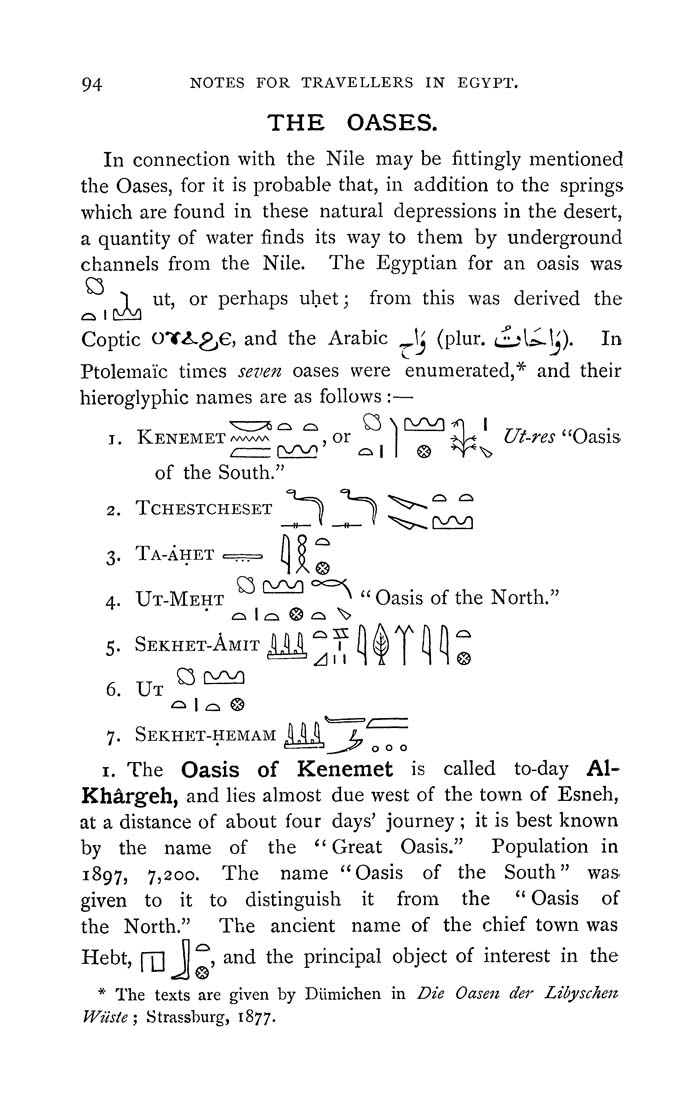94 NOTES FOR TRAVELLERS IN EGYPT.
THE OASES.
In connection with the Nile may be fittingly mentioned
the Oases, for it is probable that, in addition to the springs
which are found in these natural depressions in the desert,
a quantity of water finds its way to them by underground
channels from the Nile. The Egyptian for an oasis was
1 ut, or perhaps uhet; from this was derived the
Coptic OT^.£,e, and the Arabic J\j (plur. l1j[^\j). In
Ptolemaic times sei'en oases were enumerated,"^ and their
hieroglyphic names are as follows :—
1. Kenemet^vvwvA or -^U or-^^i"''Oasis
of the South.''
2. TCHESTCHESET 1) ]) ^'^^^^ ^ ^
3. Ta-aheTc=^ (jll
Ut-Meht
• ^ I/O © ^
SEKHET-AMITji|^¥|j|)'|'(]|];
4. Ut-Meht ^ ^^"^^ ""^ " Oasis of the North."
• ^ lo © o \>
5
6. Ut
^ I o ©
7. Sekhet-hemam j[!\J[^ y
o o o
I. The Oasis of Kenemet is called to-day Al-
Kharg'eh, and lies almost due west of the town of Esneh,
at a distance of about four days' journey ; it is best known
by the name of the '' Great Oasis." Population in
1897, 7,200. The name "Oasis of the South" was
given to it to distinguish it from the " Oasis of
the North." The ancient name of the chief town was
Hebt, p[] 1 ^-t and the principal object of interest in the
* The texts are given by Diimichen in Die Oasen der Libyschen
Wiisie*, Strassburg, 1877.
|








